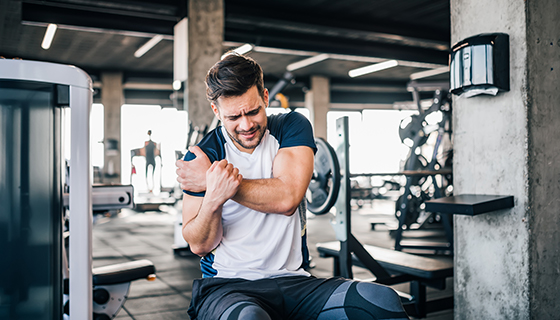Reports are separated shoulder for Chase
How and what is separated will be huge news.
Guys can sometimes play through separated AC joints and put off surgery until the off-season.
Different areas mean different things.
Fair point - and the fact the team is very much in the playoff hunt will probably be a factor if he has any chance to play.
NFL Network just reported it's an AC joint and the players on the dais after the game were saying something to the effect of "shoot it up." Oh maybe I just thought that. I don't know; I don't think I thought of shooting it up because I was thinking it depends how severe it was.
Regardless of its remedy, they're doing testing to determine the extent of its severity tomorrow.
I'm not a doctor, but I do know a little about AC joints. So does Johns Hopkins
The most common conditions of the acromioclavicular joint are arthritis, fractures and separations.

www.hopkinsmedicine.org
What is an AC joint separation?
When the AC joint is separated, it means that the ligaments are torn and the collarbone no longer lines up with the acromion. Ligaments are tough, sinewy tissues that act like tethers to hold the bones together. When those ligaments are stretched or torn they can be very painful.
The injury to the ligaments in an AC separation can be mild to severe. The injuries are graded depending upon which ligaments are torn and how badly they are torn. A grade 1 injury is where the least damage is done and only the joint itself is injured. A grade 2 injury consists of damage to the ligaments at the AC joint and also to the other ligaments that stabilize the joint. This second set of ligaments attach the collarbone to the part of the shoulder blade called the coracoid. These ligaments are called the coracoclavicular ligaments. In a grade 2 injury, these coracoclavicular ligaments are only stretched but not entirely torn. The collarbone may not line up with the acromion if these are stretched and results in a lump at the AC joint. In a grade 3 injury, the coracoclavicular ligaments are completely torn and the collarbone is no longer tethered to the shoulder blade. As a result the collarbone no longer lines up with the acromion and there is a deformity at the joint.
What is the treatment for AC joint separation?
These can be very painful injuries and the initial treatment is to decrease the pain. This is best accomplished by immobilizing the arm in a sling, placing an ice pack to the shoulder for 20 to 30 minutes as often as every two hours and using pain medication. The pain is usually proportional to the severity of the separation.
As the pain starts to subside, it is important to begin moving the fingers, wrist and elbow to prevent stiffness. Next it is important to begin shoulder motion to prevent a
stiff or "frozen" shoulder. When and how much to move the shoulder should be done at the direction of your physician, physical therapist or trainer. Usually as the pain is decreasing you will find you can move it more, and this will not damage or hinder the healing process. The length of time needed to regain full motion and function depends upon the severity or grade of the injury. A grade 1 takes 10 to 14 days, whereas a grade 3 takes six to eight weeks. A grade 2 takes somewhere in between.
When is surgery indicated?
The good news is that the majority of grade 1, 2 and 3 injuries do not need surgery. Even the grade 3 injuries usually allow a return to full activity with few restrictions. There are some surgeons who recommend surgical treatment for high-caliber athletes who throw a baseball for a living, but the vast majority of people do not need surgery for this condition. There are rare variations of this injury where the collarbone is higher than usual and almost sticking through the skin. In these cases surgery may be indicated but careful consideration should be given to the advantages and disadvantages of surgery. The advantage is that the deformity at the AC joint is corrected, but in exchange there is a scar on the shoulder. Another advantage for the very severe deformity is that it will eliminate pain if the end of the collarbone is rubbing the skin or muscle. Disadvantages of surgery are that there are risks of infection, a longer time to return to full function and continued pain is some cases. Surgery can be very successful in cases where it is indicated.


